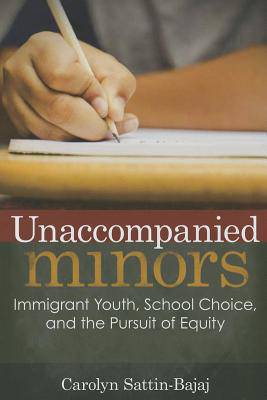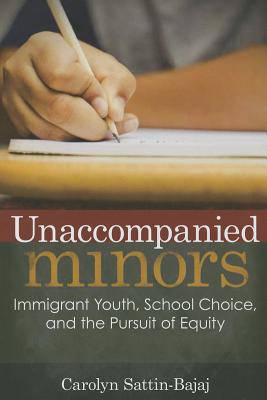
Bedankt voor het vertrouwen het afgelopen jaar! Om jou te bedanken bieden we GRATIS verzending (in België) aan op alles gedurende de hele maand januari.
- Afhalen na 1 uur in een winkel met voorraad
- Gratis thuislevering in België
- Ruim aanbod met 7 miljoen producten
Bedankt voor het vertrouwen het afgelopen jaar! Om jou te bedanken bieden we GRATIS verzending (in België) aan op alles gedurende de hele maand januari.
- Afhalen na 1 uur in een winkel met voorraad
- Gratis thuislevering in België
- Ruim aanbod met 7 miljoen producten
Zoeken
Unaccompanied Minors
Immigrant Youth, School Choice, and the Pursuit of Equity
Carolyn Sattin-Bajaj
Paperback | Engels
€ 47,45
+ 94 punten
Uitvoering
Omschrijving
School choice--now a pillar of education reform in the United States--is widely touted as a strategy for addressing educational inequity. Yet efforts to implement school choice can exacerbate, rather than counteract, inequities. Unaccompanied Minors takes a close look at the experience of immigrant students and their families navigating New York City's mandatory high school choice program. Drawing on rich ethnographic data--including students' own perspectives on the decision-making process--Carolyn Sattin-Bajaj examines the assumptions and expectations underlying the school system's policies for implementing school choice and contrasts these with the cultural and practical obstacles that prevent many immigrant students from navigating the system effectively. The author distinguishes between "strategic" and "passive" choosers and analyzes the constellation of integrated supports, guidance, and normative messages that contribute to a strategic orientation. Most importantly, Unaccompanied Minors outlines strategic steps schools and districts can take to guide families from all backgrounds through the choice process.
Specificaties
Betrokkenen
- Auteur(s):
- Uitgeverij:
Inhoud
- Aantal bladzijden:
- 216
- Taal:
- Engels
Eigenschappen
- Productcode (EAN):
- 9781612507095
- Verschijningsdatum:
- 1/09/2014
- Uitvoering:
- Paperback
- Formaat:
- Trade paperback (VS)
- Afmetingen:
- 152 mm x 226 mm
- Gewicht:
- 294 g

Alleen bij Standaard Boekhandel
+ 94 punten op je klantenkaart van Standaard Boekhandel
Beoordelingen
We publiceren alleen reviews die voldoen aan de voorwaarden voor reviews. Bekijk onze voorwaarden voor reviews.












